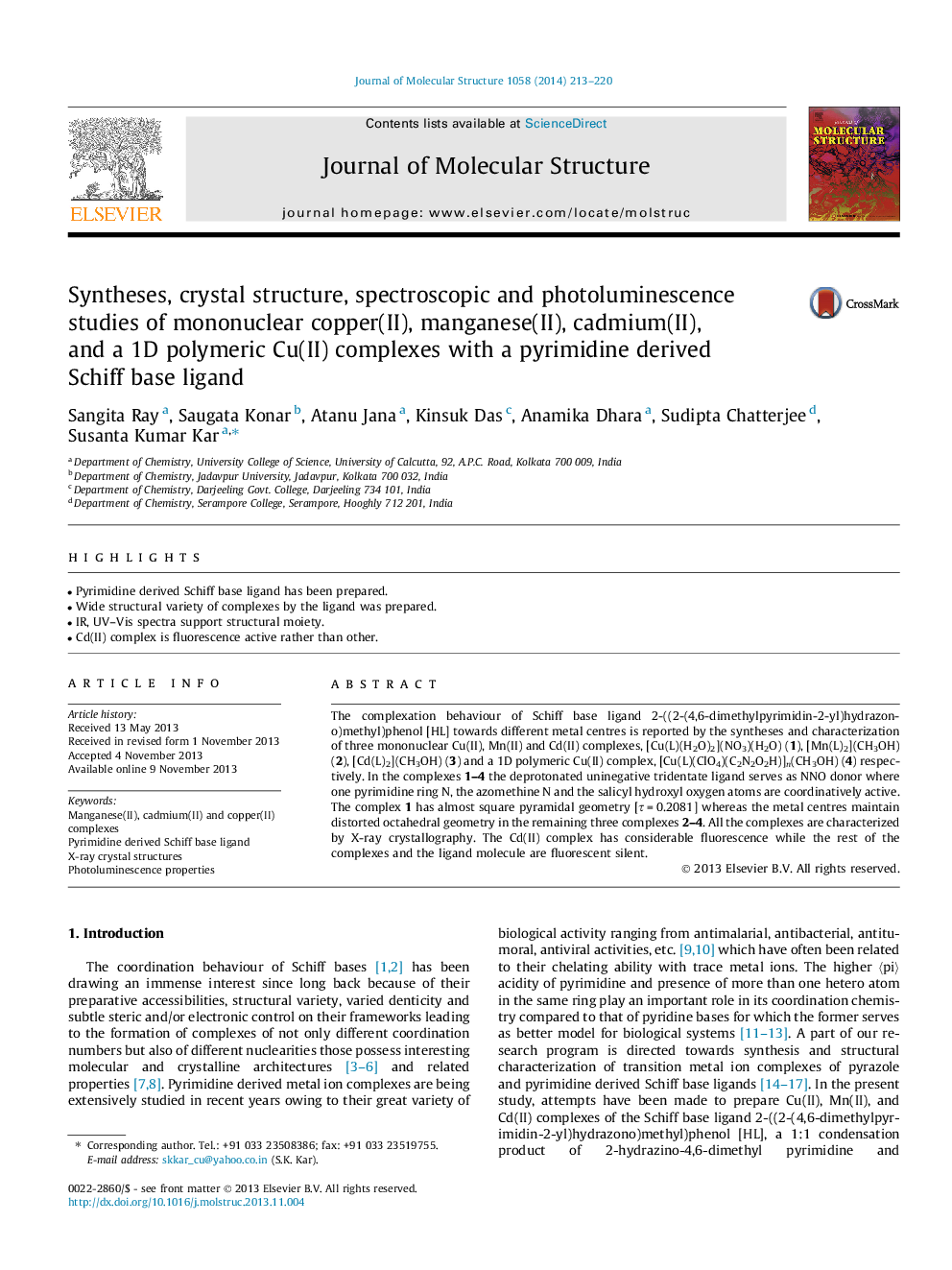| کد مقاله | کد نشریه | سال انتشار | مقاله انگلیسی | نسخه تمام متن |
|---|---|---|---|---|
| 1405789 | 1501758 | 2014 | 8 صفحه PDF | دانلود رایگان |

• Pyrimidine derived Schiff base ligand has been prepared.
• Wide structural variety of complexes by the ligand was prepared.
• IR, UV–Vis spectra support structural moiety.
• Cd(II) complex is fluorescence active rather than other.
The complexation behaviour of Schiff base ligand 2-((2-(4,6-dimethylpyrimidin-2-yl)hydrazono)methyl)phenol [HL] towards different metal centres is reported by the syntheses and characterization of three mononuclear Cu(II), Mn(II) and Cd(II) complexes, [Cu(L)(H2O)2](NO3)(H2O) (1), [Mn(L)2](CH3OH) (2), [Cd(L)2](CH3OH) (3) and a 1D polymeric Cu(II) complex, [Cu(L)(ClO4)(C2N2O2H)]n(CH3OH) (4) respectively. In the complexes 1–4 the deprotonated uninegative tridentate ligand serves as NNO donor where one pyrimidine ring N, the azomethine N and the salicyl hydroxyl oxygen atoms are coordinatively active. The complex 1 has almost square pyramidal geometry [τ = 0.2081] whereas the metal centres maintain distorted octahedral geometry in the remaining three complexes 2–4. All the complexes are characterized by X-ray crystallography. The Cd(II) complex has considerable fluorescence while the rest of the complexes and the ligand molecule are fluorescent silent.
Journal: Journal of Molecular Structure - Volume 1058, 24 January 2014, Pages 213–220